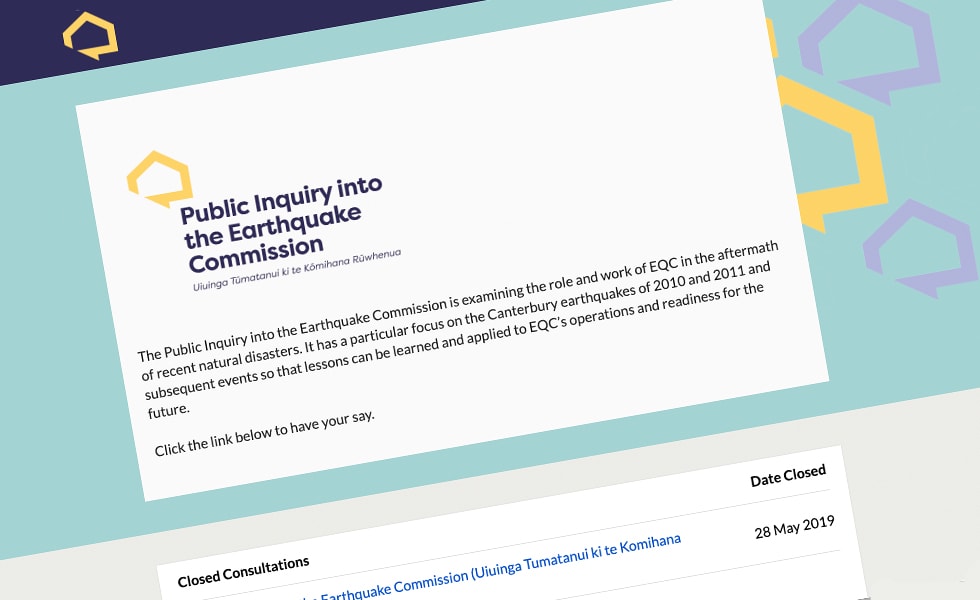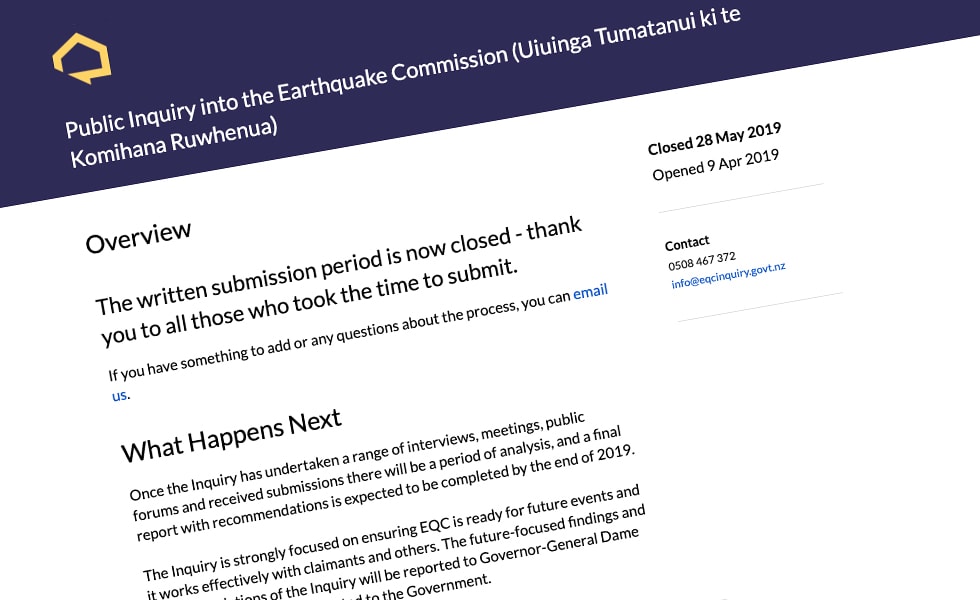Customer story: Earthquake Commission Inquiry, NZ
Public Inquiry Process

A natural disaster
In 2010, a devastating, magnitude 7.1 earthquake ripped through New Zealand’s South Island, triggering a sequence of thousands more. These included another huge event on Feb 22, 2011, which affected the Christchurch area and tragically caused the deaths of nearly 200 people.
New Zealand has always experienced frequent earthquakes, and they have a state-owned insurance organisation dedicated to supporting victims of the resulting damage and injury called the Earthquake Commission (EQC).
However, following the devastating Christchurch earthquake, the EQC’s response was heavily criticised and as of 2018, thousands of citizens were still waiting for their claims to be resolved.
Those affected by the quake a year earlier with outstanding claims got pushed to the back of the queue and were forced to wait even longer for resolution. Because of this, a Public Inquiry was set up to look into the EQC’s response to the disaster and make recommendations for future improvements.
They chose Citizen Space
The Inquiry, led by Dame Silvia Cartwright, chose Citizen Space as the online platform through which affected New Zealanders could share their experiences. Because so many people were impacted by the earthquake - nearly a tenth of New Zealand’s total population - the Inquiry team needed a tool that was accessible across broad demographic ranges, and able to support huge numbers of responses and supporting evidence. Given the sensitive nature of many of the comments, watertight data security was also a must.
Citizen Space is by nature accessible, being fully optimised for use with screen readers and other accessibility software. It’s powerful enough to handle thousands of responses, and efficient, easy-to-use analysis features keep processing times to a minimum, even with high volumes of submissions - all of which make it the ideal platform for running Public Inquiries and Calls for Evidence.
Following the story
Citizen Space also allows the public to follow the ‘story’ of a particular consultation or engagement activity, which is especially important in a situation like this, where many thousands of people have been personally affected and will be invested in the outcome. Once a survey closes, its overview page can be updated with what’s happening next. Once online submissions from the public closed, the Inquiry team updated the overview page with information on when results would be expected and links to further information.
Throughout the Inquiry, Dame Cartwright has been upfront and honest about expected turnaround times. A full report is expected at the end of 2019, but a summary has already been released of the evidence they received from the victims of the 2011 natural disaster.
Want a real person to walk you through a live demo?
We’re happy to help out. We'll answer all your questions. We won't share your contact details.
Request a Free Demo